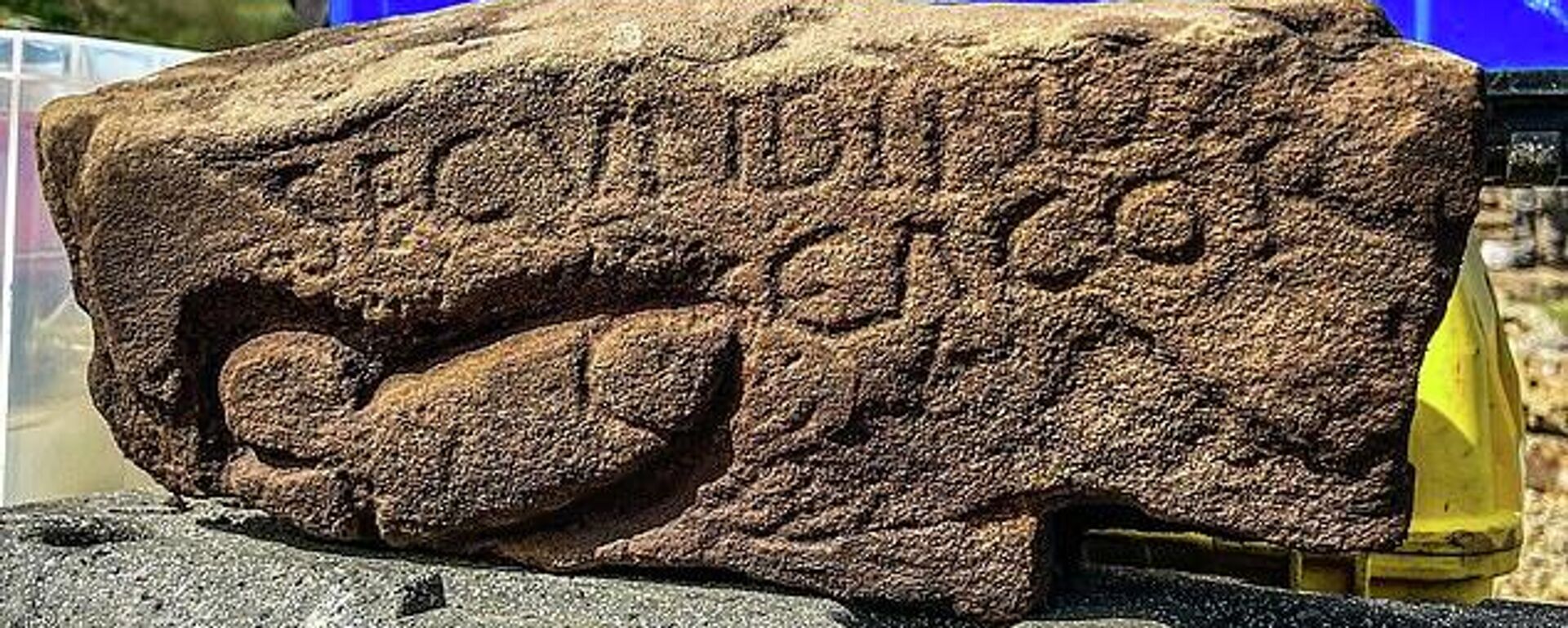https://sputnikglobe.com/20220927/likely-ancient-roman-anchor-found-off-the-coast-of-england-1101254557.html
Likely Ancient Roman Anchor Found Off The Coast of England
Likely Ancient Roman Anchor Found Off The Coast of England
Sputnik International
Roman ships patrolled the British seas from the mid-first century to the mid-third century. The Classis Britannica was a regional Roman fleet and the first... 27.09.2022, Sputnik International
2022-09-27T03:04+0000
2022-09-27T03:04+0000
2023-05-28T15:21+0000
world
ancient rome
iron age
united kingdom (uk)
https://cdn1.img.sputnikglobe.com/img/105955/83/1059558334_0:306:3264:2142_1920x0_80_0_0_f1f9e208a1eacae6aa84310b14e13e0f.jpg
An ancient anchor has been found off the coast of England in the North Sea.The anchor dates from 1,600 to 2,000 years ago, likely during the Roman era but possibly during the Iron Age. The anchor has similar features to those used on ships during the Imperial Roman period and likely came from a merchant ship weighing between 500 and 600 tons.The anchor is more than 6.5 ft long and weighs about 200 pounds. It was first discovered in 2018 during a marine seabed survey by ScottishPower Renewables as they prepared for the construction of its East Anglia One offshore wind farm.It has since been studied in laboratories and its estimated age was released Friday in a ScottishPower press release. Studies are ongoing to more accurately pinpoint its age and place of origin.After the analysis of the anchor is complete, it will be put on display at the Colchester and Ipswich Museums.The marine seabed survey by ScottishPower Renewables also unearthed a WWI-era German submarine, numerous other artifacts from the Bronze Age, Iron Age, Roman, and Medieval periods, as well as a prehistoric monument dating back more than 4,000 years.
https://sputnikglobe.com/20220526/carved-phallus--graffiti-slamming-roman-soldier-secundinus-the-ster-found-on-hadrians-wall--1095792768.html
ancient rome
united kingdom (uk)
Sputnik International
feedback@sputniknews.com
+74956456601
MIA „Rossiya Segodnya“
2022
News
en_EN
Sputnik International
feedback@sputniknews.com
+74956456601
MIA „Rossiya Segodnya“
Sputnik International
feedback@sputniknews.com
+74956456601
MIA „Rossiya Segodnya“
ancient rome, iron age, united kingdom (uk)
ancient rome, iron age, united kingdom (uk)
Likely Ancient Roman Anchor Found Off The Coast of England
03:04 GMT 27.09.2022 (Updated: 15:21 GMT 28.05.2023) Roman ships patrolled the British seas from the mid-first century to the mid-third century. The Classis Britannica was a regional Roman fleet and the first navy in Britain.
An ancient anchor has been found off the coast of England in the North Sea.
The anchor dates from 1,600 to 2,000 years ago, likely during the Roman era but possibly during the Iron Age. The anchor has similar features to those used on ships during the Imperial Roman period and likely came from a merchant ship weighing between 500 and 600 tons.
The anchor is more than 6.5 ft long and weighs about 200 pounds. It was first discovered in 2018 during a marine seabed survey by ScottishPower Renewables as they prepared for the construction of its East Anglia One offshore wind farm.
It has since been studied in laboratories and its estimated age was released Friday in a
ScottishPower press release. Studies are ongoing to more accurately pinpoint its age and place of origin.
Brandom Mason from Maritime Archaeology Ltd was observing the anchor when it was brought to the surface and transported to shore. “Everything points to this being a Roman anchor of almost 2,000 years old, which is an incredibly rare piece of history,” Mason said via the press release. “If this date is confirmed, it would be hard to overstate its significance – we only know about three pre-Viking anchors from northern European waters outside the Mediterranean region and only two actually survived.”
After the analysis of the anchor is complete, it will be put on display at the Colchester and Ipswich Museums.
The marine seabed survey by ScottishPower Renewables also unearthed a WWI-era German submarine, numerous other artifacts from the Bronze Age, Iron Age, Roman, and Medieval periods, as well as a prehistoric monument dating back more than 4,000 years.





